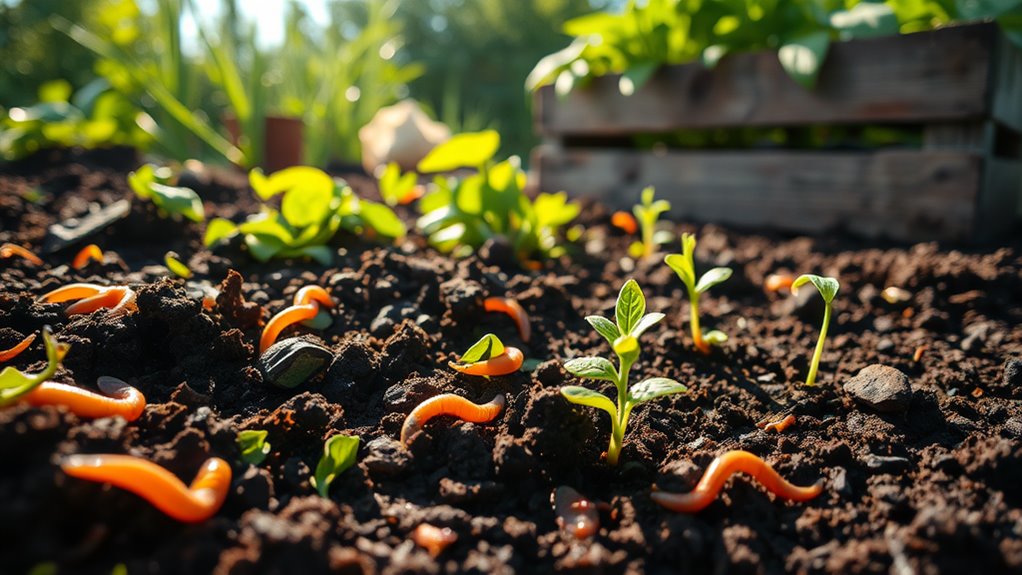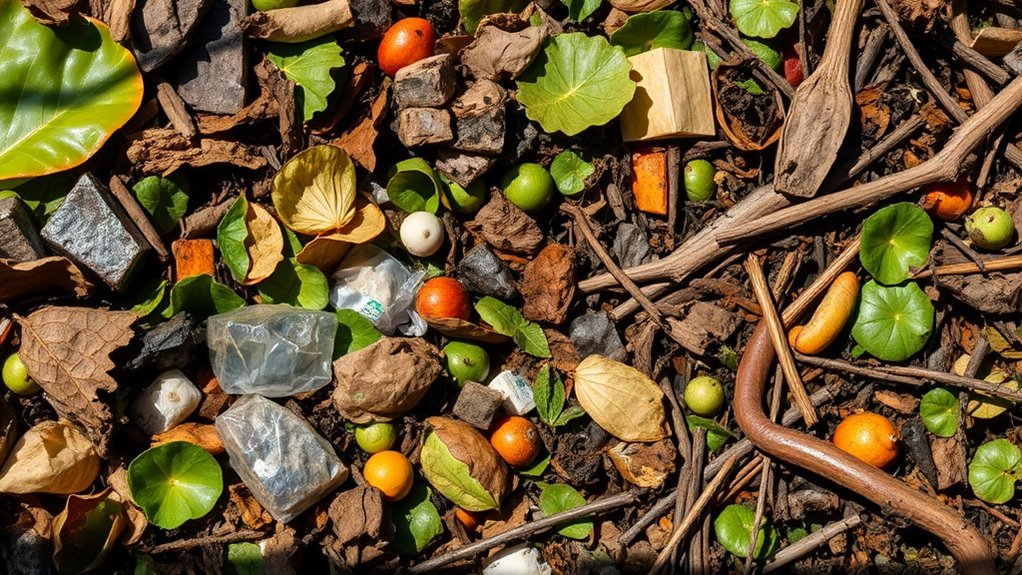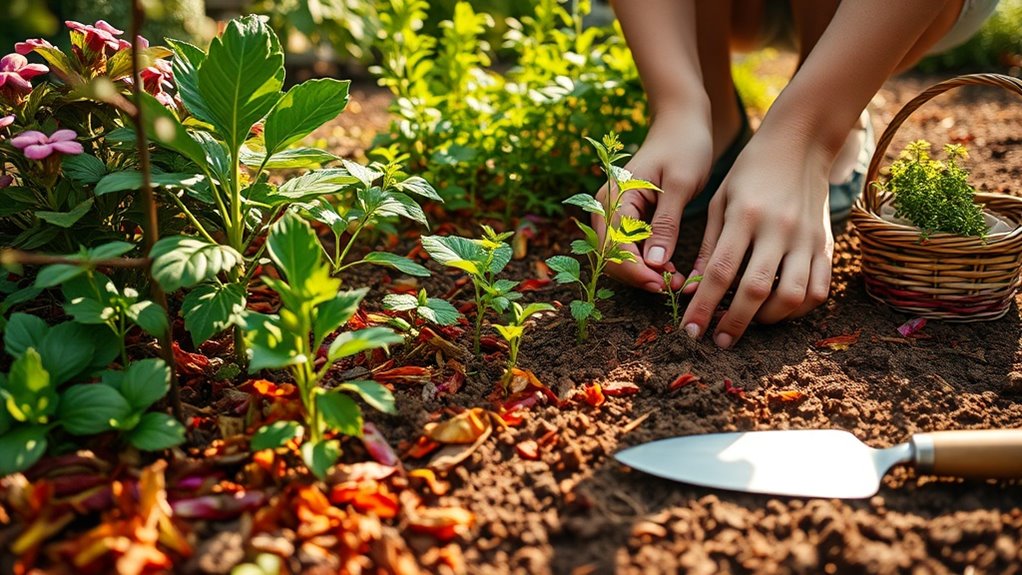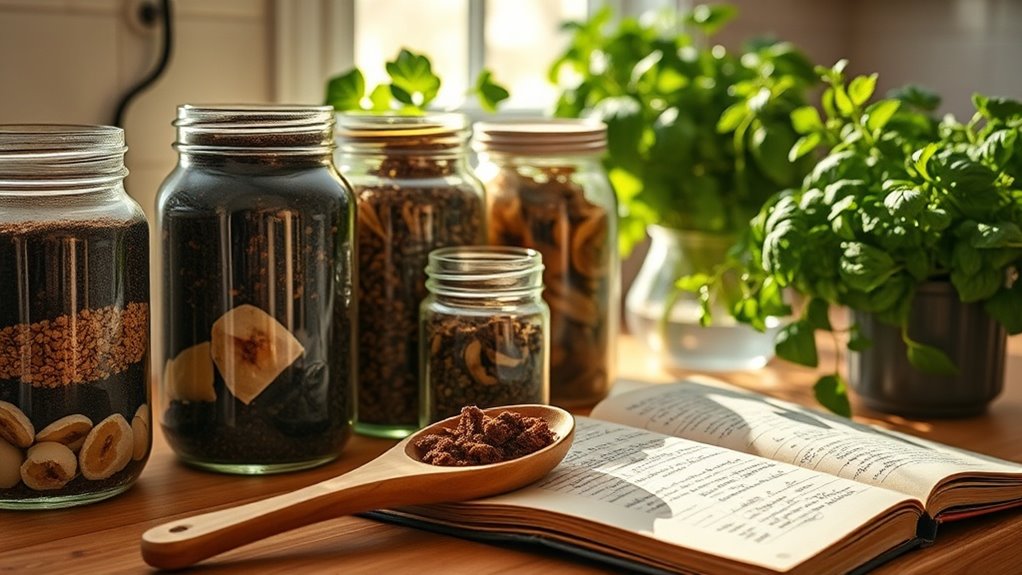Improve Your Soil in 7 Days With These Natural Tricks
Is your soil the foundation for a thriving garden? Improving it doesn’t have to be a long, complicated process. In just seven days, you can implement natural techniques that enhance soil health, leading to better plant growth. From testing pH levels to introducing beneficial organisms, each step plays a crucial role. But what are the specific actions you can take to transform your soil effectively? Let’s explore the methods that can yield significant results.
Key Takeaways
- Test your soil pH using a kit and adjust with lime or sulfur to maintain an ideal range of 6.0 to 7.5.
- Aerate compacted soil using forks or aerators, and introduce earthworms to enhance drainage and improve root penetration.
- Add a 1-2 inch layer of compost and organic materials like leaves to enrich nutrients and boost microbial activity.
- Apply organic mulch to retain moisture, suppress weeds, and regulate soil temperature for healthier root systems.
- Implement cover crops to prevent erosion, improve nutrient retention, and enhance soil structure while promoting biodiversity.
Day 1: Test Your Soil Ph
Testing your soil’s pH is the crucial first step in improving its health. By measuring the acidity or alkalinity, you can identify nutrient availability and potential deficiencies.
A pH level between 6.0 and 7.5 is generally ideal for most plants. If your soil’s pH is outside this range, it can hinder growth.
You can use pH test kits or meters for accurate readings. Based on the results, you can apply soil improvement tips, such as adding lime to raise pH or sulfur to lower it. Additionally, understanding the signs of acidic soil can help you take timely action to restore balance.
This foundational knowledge empowers you to enhance your soil, ensuring robust plant development.
Day 2: Add Compost for Nutrient Boost
Adding compost to your soil is a highly effective way to enhance its nutrient profile.
You’ll benefit from understanding which materials to include and how to apply compost for maximum impact.
This process not only enriches your soil but also promotes healthier plant growth. Additionally, incorporating fast composting techniques can help you create compost in just two weeks, providing you with a quick source of nutrients for your garden.
Benefits of Composting
Composting transforms organic waste into a rich soil amendment, offering numerous benefits for gardeners and farmers alike. It enhances soil structure, increases moisture retention, and fosters beneficial microbial activity. By adding compost, you encourage nutrient cycling, leading to healthier plants and improved yields.
| Benefit | Description |
|---|---|
| Nutrient-Rich | Provides essential nutrients for plant growth. |
| Soil Structure | Improves aeration and drainage in the soil. |
| Microbial Activity | Boosts beneficial organisms that support plant health. |
Incorporating compost today can significantly elevate your soil’s quality and promote sustainable gardening practices.
Composting Materials to Use
When it comes to creating effective compost, choosing the right materials is crucial for maximizing nutrient content.
Incorporating a diverse range of organic materials ensures a balanced compost that enriches your soil.
Focus on these key items:
- Kitchen scraps: Fruit and vegetable peels provide essential nitrogen.
- Dry leaves: High in carbon, they help aerate compost.
- Grass clippings: A nitrogen-rich material that heats up the pile.
- Eggshells: They add calcium, promoting strong plant growth.
Applying Compost Effectively
To enhance soil health and fertility, applying compost effectively is essential.
Start by selecting a well-aged compost, rich in nutrients.
Spread a 1-2 inch layer evenly across your garden or raised beds, avoiding direct contact with plant stems to prevent rot.
Incorporate the compost into the top 6-12 inches of soil using a garden fork or tiller; this improves aeration and nutrient distribution.
Water lightly to help microbes activate.
Regular compost applications, ideally twice a year, can significantly boost soil structure and fertility.
Monitoring plant responses will help you adjust future composting practices for optimal results.
Day 3: Incorporate Organic Mulch
Adding organic mulch is a highly effective way to enhance soil health and structure.
By applying a layer of mulch, you’ll not only improve moisture retention but also foster beneficial microbial activity.
Here are some key benefits of incorporating organic mulch:
- Weed Suppression: Reduces competition for nutrients and water.
- Temperature Regulation: Helps stabilize soil temperature, protecting roots.
- Nutrient Enrichment: As it decomposes, organic mulch adds essential nutrients.
- Erosion Prevention: Shields soil from wind and water erosion.
Incorporating organic mulch today sets the foundation for a thriving garden ecosystem, ensuring your soil remains healthy and productive. Additionally, organic mulch contributes to beneficial microbial activity, which is crucial for maintaining soil vitality and fertility.
Day 4: Use Cover Crops
Using cover crops can significantly enhance your soil’s health and fertility. They not only prevent erosion but also improve nutrient retention and biodiversity. Choosing the right varieties and following proper planting and maintenance practices are crucial to maximizing their benefits. Additionally, cover crops can contribute to soil health by fixing nitrogen and improving soil structure.
Benefits of Cover Crops
How can cover crops transform soil health and agricultural productivity?
By planting these crops, you can enhance your soil’s structure and fertility.
Cover crops prevent erosion, suppress weeds, and improve moisture retention.
Here are some key benefits:
- Nutrient Cycling: They capture and recycle nutrients, reducing the need for synthetic fertilizers.
- Soil Structure: Their roots create channels, promoting aeration and water infiltration.
- Pest Management: Certain cover crops deter pests, reducing crop damage.
- Biodiversity Boost: They enhance microbial activity, fostering a healthier soil ecosystem.
Incorporating cover crops is a strategic move for sustainable soil improvement.
Choosing Suitable Varieties
Selecting the right cover crop variety is crucial for maximizing soil health and enhancing agricultural productivity.
Consider your specific soil type, climate, and the primary issues you face, such as erosion or nutrient depletion.
For example, legumes like clover can fix nitrogen, improving fertility, while grasses like rye can prevent erosion and suppress weeds.
Research local conditions and choose varieties that thrive in your area to ensure effective growth and benefits.
Integrating diverse cover crops promotes biodiversity, enhances soil structure, and improves water retention.
Matching the right species to your goals will yield tangible benefits for your soil’s long-term health.
Planting and Maintenance Tips
Once you’ve chosen the right cover crop varieties, the next steps involve effective planting and maintenance to maximize their benefits.
Follow these guidelines for optimal results:
- Plant at the right time: Timing ensures effective growth before your main crops.
- Maintain proper soil moisture: Consistent moisture supports germination and establishment.
- Monitor for pests: Regular checks help prevent infestations that can harm your cover crops.
- Terminate appropriately: Use methods like mowing or tilling before your main planting to incorporate nutrients.
Day 5: Introduce Earthworms
Introducing earthworms into your garden is a powerful strategy for enhancing soil health.
These beneficial creatures aerate the soil, improving drainage and root penetration.
As they consume organic matter, they break it down into nutrient-rich castings, significantly boosting soil fertility.
Research shows that earthworm activity can increase microbial diversity, which further supports plant growth.
To introduce them, simply add organic materials like compost or leaf litter to attract these worms.
Ensure your soil remains moist, as earthworms thrive in damp environments. Additionally, easy home composting provides an excellent source of organic material that can entice earthworms into your garden.
Day 6: Apply Natural Fertilizers
How can you enhance your garden’s soil fertility effectively?
Applying natural fertilizers is a powerful way to boost nutrient levels while promoting sustainability.
These organic options improve soil structure and support microbial life, ensuring healthy plant growth.
- Compost: Rich in nutrients, it improves soil texture and moisture retention.
- Manure: Adds essential nitrogen, phosphorus, and potassium, enhancing fertility.
- Bone Meal: Provides a slow-release source of phosphorus for strong root development.
- Kelp Meal: Offers trace minerals and growth hormones, promoting overall plant health.
Additionally, creating a DIY all-natural fertilizer can utilize kitchen scraps and yard waste to enhance your garden’s nutrient profile. Incorporate these natural fertilizers to create a thriving garden ecosystem.
Day 7: Practice Crop Rotation
To maximize soil health and crop yields, practice crop rotation as a strategic approach in your garden.
By alternating crops each season, you reduce nutrient depletion and disrupt pest and disease cycles.
For instance, legumes enrich nitrogen levels, while brassicas can help manage soil pathogens. This method enhances biodiversity, promoting beneficial microorganisms that improve soil structure and fertility.
Research indicates that crop rotation can boost yields by 10-25% compared to continuous cropping. Additionally, incorporating ideal crops for this month can further optimize your planting strategy and ensure a successful harvest.
Plan your rotations based on plant families, ensuring diverse nutrient utilization.
Implementing this practice will foster resilient soil, ultimately leading to healthier plants and higher harvests.





